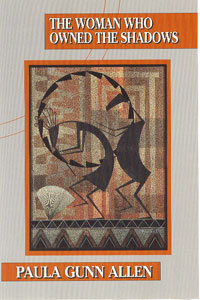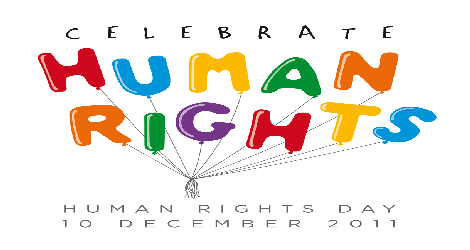A Word of Caution for Human Rights Day
December 6, 2011 by Patrick David Heery, an editorial
They do not need a voice. They need a microphone.
This December, Unbound offers a mini-issue for Human Rights Day, December 10, 2011, when people all across the world celebrate the United Nations’ Universal Declaration of Human Rights, adopted on December 10, 1948. Our focus: indigenous land rights.
As a social justice advocate, as someone who passionately cares about the rights of the oppressed and of indigenous peoples, and as the managing editor of Unbound, I am proud to bring you these articles. But as a white young man, I am aware of my own limitations in bringing these voices and issues forward. The non-indigenous need to be careful not to speak for indigenous peoples. They do not need a voice. They already have one of those, a voice far more articulate and experienced on these matters, a voice that is their own. At best, they need a microphone, a means for expressing and amplifying their voices when met with systematic silencing and misinformation—the monologue of power. It is our hope that Unbound can be a different microphone. Even on our small scale, but on this subject particularly, we are aware that the structure of unequal relationships can keep power and policy in the hands of those who already have it.
___________________________________________
They do not need a voice. They need a microphone.
___________________________________________
Self-determination, the right to one’s own identity, is a human right, without which inequities inevitably remain in even the most well-intentioned of advocacy relationships. In other words, I do not get to determine what it means to be an American Indian or a member of the Wiyot people or a Hawaiian. I do not get to act or think or devise policy on their behalf. I do not get to play hero. What I do get to do is: listen, partner, act with, while they determine for themselves what it means to be American Indian, Wiyot, or Hawaiian.
 Not a Cause, a Person
Not a Cause, a Person
In her book, The Woman Who Owned the Shadows, Paula Gunn Allen offers a complex American Indian woman of mixed blood, named Ephanie, who illustrates the struggle to be seen and acknowledged as an equal and empowered partner.[i]
Ephanie does not want to be a cause. She wants to be a person. In her mind, she is not even allowed to be Indian or woman, because “she was not the Indian maiden she was supposed to be… not the Indian they imagined and took her to be… she was not noble, not wise, not exotic” (66). Now, we might think that things will get better when she meets two progressive, activist women—surely they will be different. Instead, they are political “types” driven by “ideas that they put people in” (136). They mean well, but they regard Ephanie as if a wooden Indian, as if an artifact from the past, a thing wronged, fragile, and helpless, a victim. Though they “hang on her every word,” they do not listen (136). Instead of letting Ephanie inform them of what it means to be an American Indian, they try to tell her. They tell her about her people, about the wise medicine man, the poor displaced Navajo woman, and the rising rates of cancer, alcoholism, and squalor among her own people (137-8).
All the while, one of these women is wearing the very Indian belt she condemns for being a symbol of the exploitation of the American Indians. She demonstrates no awareness or critique of her own (quite visible) complicity in the oppression.
___________________________________________
It is a history in which the privileged have found new ways to hold onto the same old power over the American Indian and specifically the American Indian woman.
___________________________________________
Ephanie tries to make these women understand that they are in no position to be saviors. She points out the alcoholism among housewives and college students, their own poor working conditions, and their own struggles, so that these two white women might come to see that victimization is not Indian; it is human, even if disproportionately allotted to some groups of people (140).
Don’t Rescue Me, Work with Me
Ephanie and her struggle have a context: it is a history in which American Indians were assigned numbers.[ii] It is a history of consigning American Indians to one-dimensional stereotypes, such as the noble savage or what Mark Taylor describes as the “reservation rescue-able subject.”[iii] It is a history in which the privileged have found new ways to hold onto the same old power over the American Indian and specifically the American Indian woman.
Ines Maria Talamantez, in her essay “Seeing Red: American Indian Women Speaking about Their Religious and Political Perspectives,”[iv] identifies the appropriation of American Indian causes and identities by non-natives as “intellectual imperialism” (386). Such appropriation, argues Talamantez, regards knowledge, culture, and history as identifiable objects that can be consumed as if they were “disembodied” (386). Talamantez is not objecting to inter-cultural dialogue and sharing. She is objecting to the theft of identity from those who have no political power to resist.
Talamantez offers a hard word. But she also offers a distinction. She contrasts consumption with respect for American Indian traditions: “the offering of respect in concrete gestures of solidarity with the contemporary struggles for sovereignty of indigenous peoples as well as in the validation of indigenous belief systems” (406). The central contrast is power.
An Exercise in Listening
As we stand in solidarity, indigenous peoples must have the right to speak for themselves, to define their own identities, and to take the lead in determining the agenda of our change-making. And what we (the non-indigenous) need to do is listen. The articles in this issue each represent an attempt to do just that: to listen. Some come from within an indigenous community, and some come from outsiders. But each wants to see a radical shifting of power.
For instance, Dustyn Ragasa’s article, “Justice, Occupied: The Blood Quantum Revisited,” identifies the U.S. government’s appropriation of the right to define what constitutes “Hawaiian,” using a definition based solely on a constructed category of race through the analysis of blood samples, rather than the traditional cultural definitions. The power to determine who is Hawaiian and who is not—this is a power that should reside with Hawaiians. Certainly, the issue becomes more complex when more subjective and cultural definitions are allowed to enter, especially when considering financial assistance, but that is precisely the point: the identities and issues involved in indigenous peoples’ rights ARE complex, and the ones most equipped to tackle them are the ones who most directly experience them.
Patrick David Heery is the Managing Editor of Unbound. He has a Master of Divinity from Princeton Theological Seminary and has ministered in the areas of community organizing, prison and hospital chaplaincy, and the church.
[i] Allen, Paula Gunn. The Woman Who Owned the Shadows. San Francisco: Aunt Lute Books, 1983.
[ii] Idlout, Lucie. “My Mother’s Name” from My Mother’s Name (album). Arbor Records, Ltd, 2003.
[iii] Taylor, Mark. TH/CH 34466 Feminist and Womanist Theologies Lecture. September 28, 2010.
[iv] Talamantez, Ines Maria. “Seeing Red: American Indian Women Speaking about Their Religious and Political Perspectives,” in In Our Own Voices: Four Centuries of American Women’s Religious Writing (Rosemary Skinner Keller and Rosemary Radford Ruether, eds.). Louisville, KY: Westminster John Knox Press, 1996, pp. 385-423.
Banner photo by Christopher Bruno.







Unbound Social